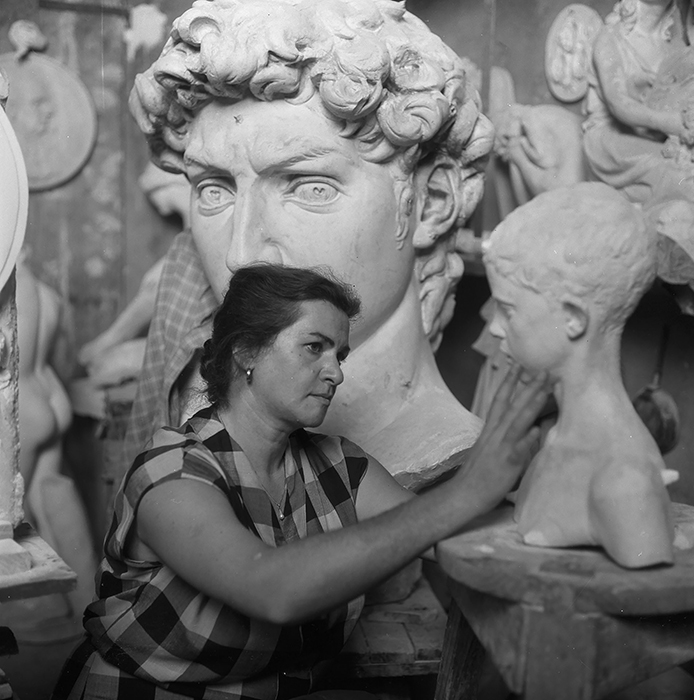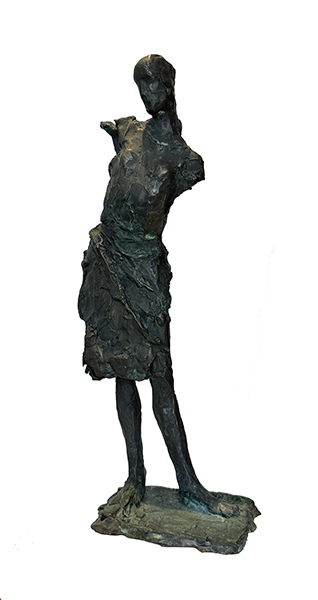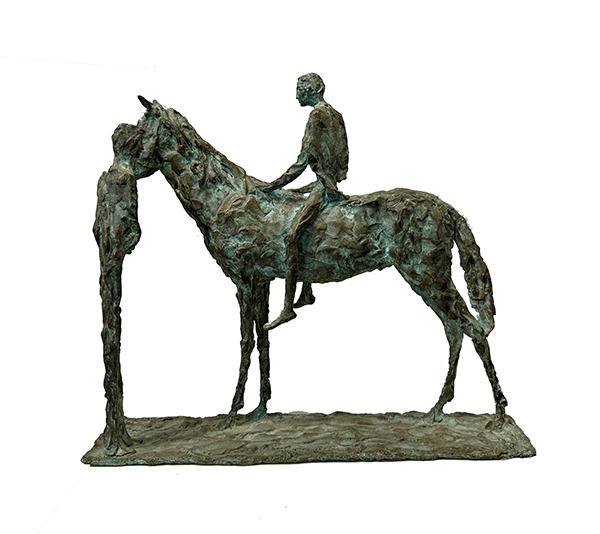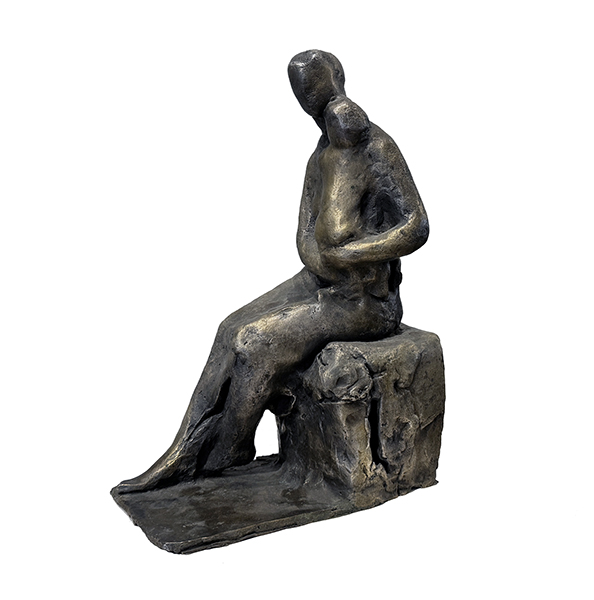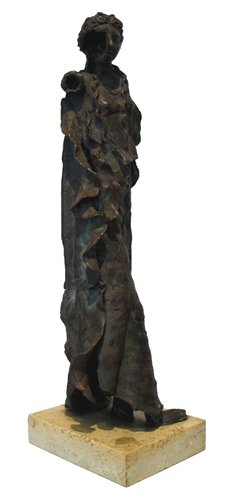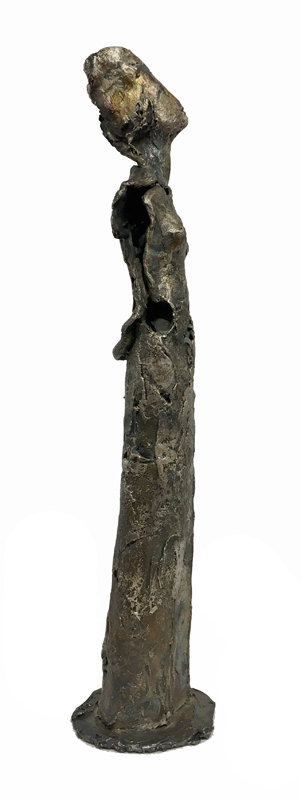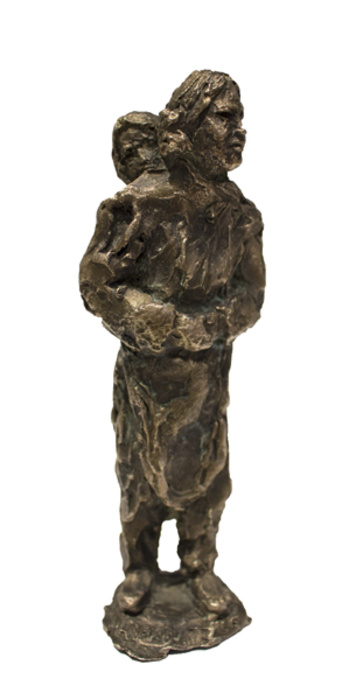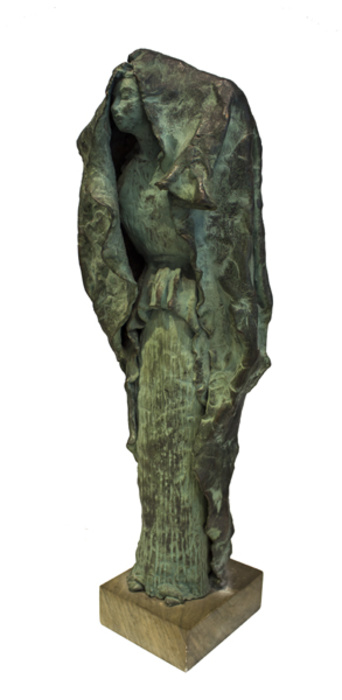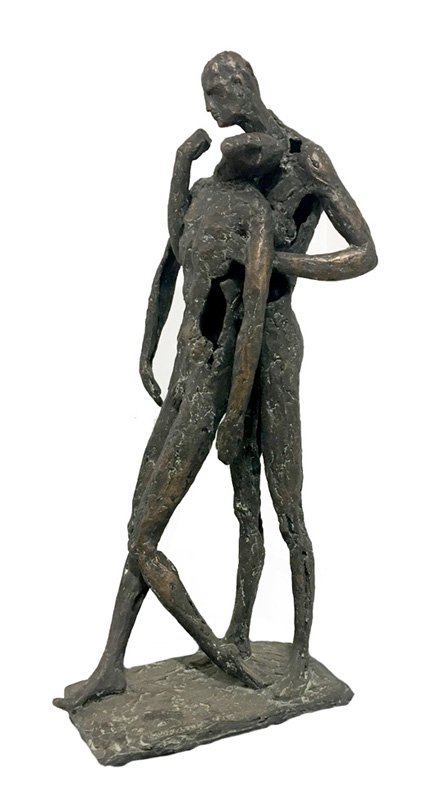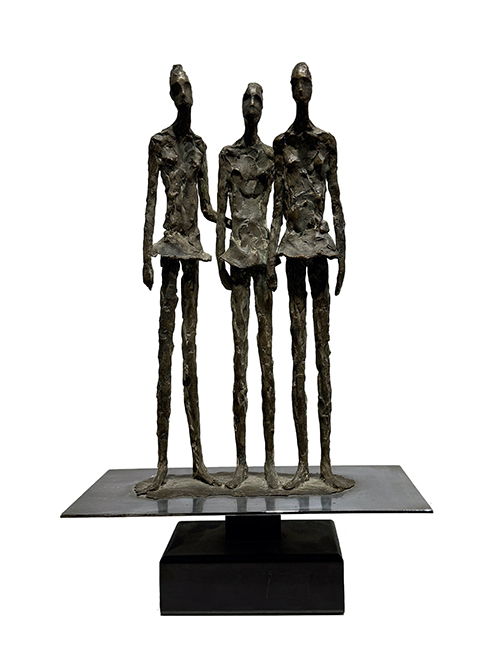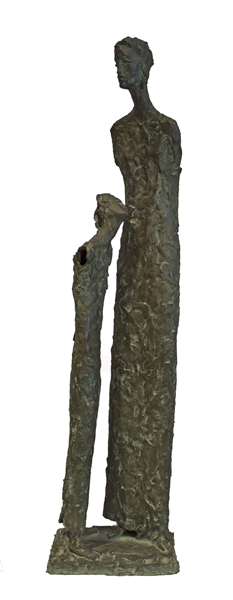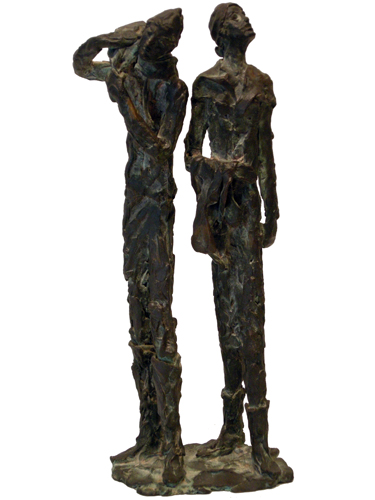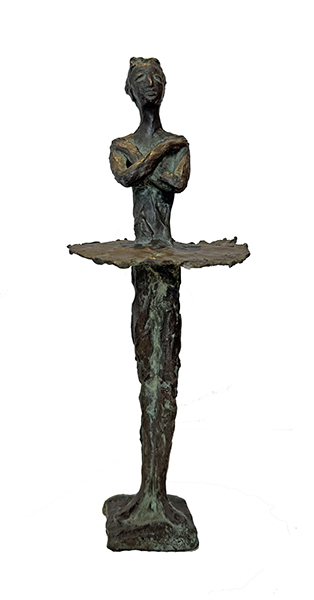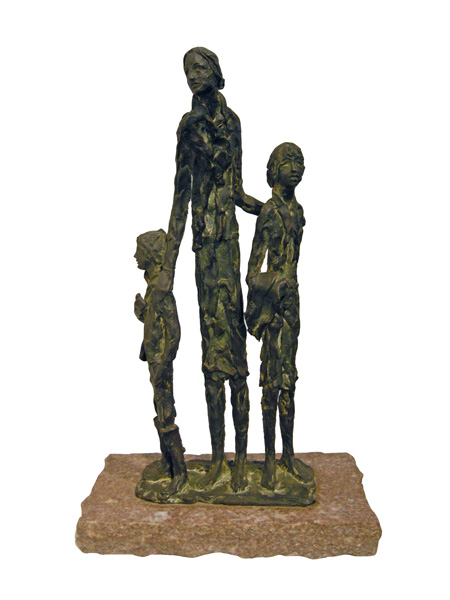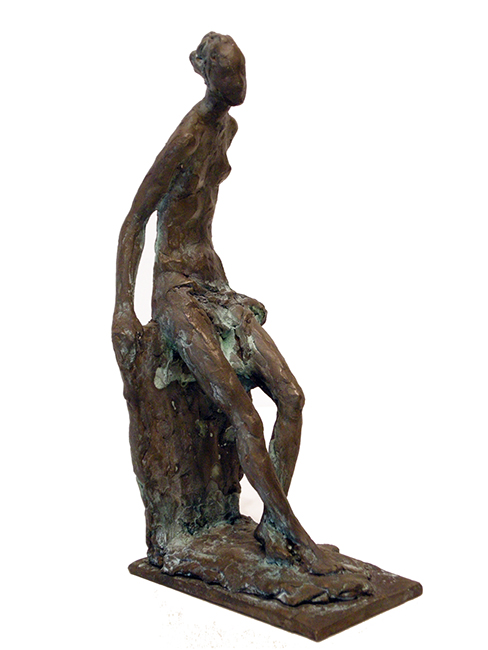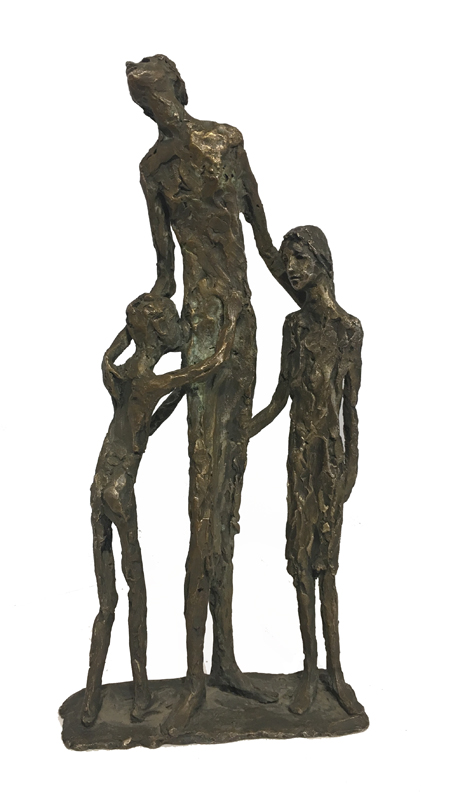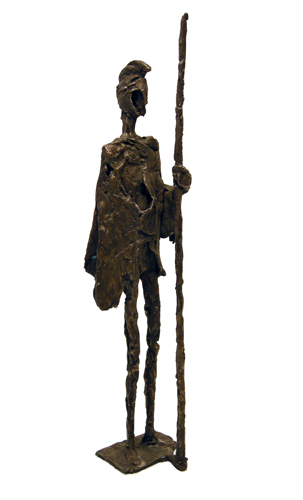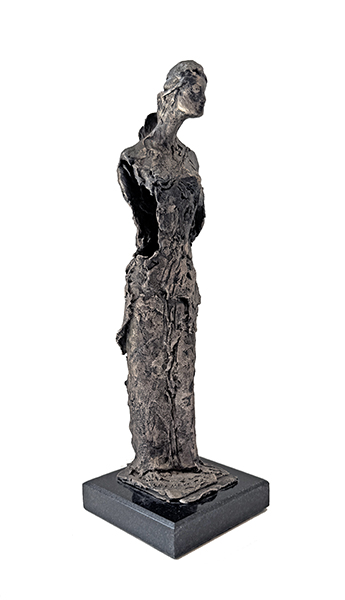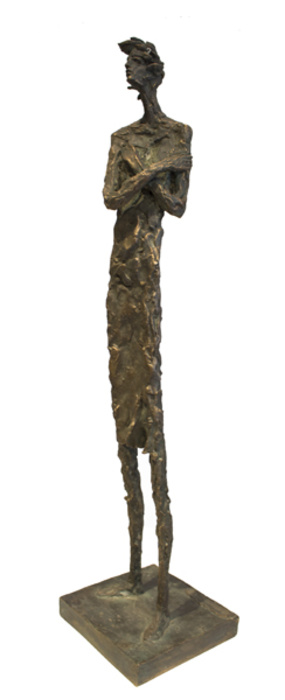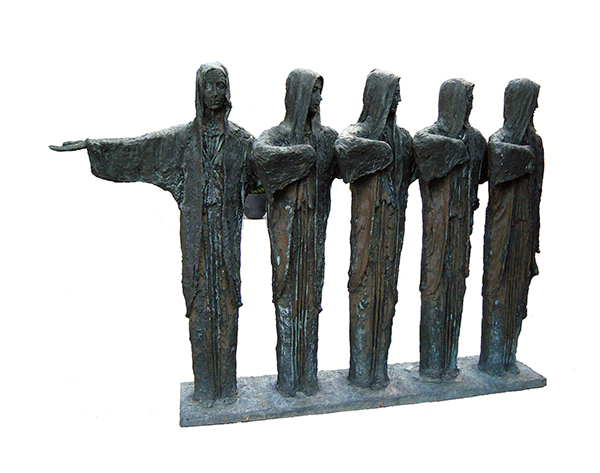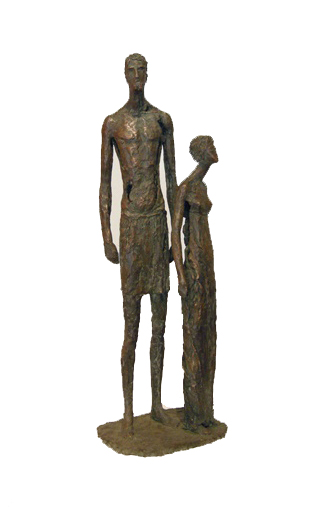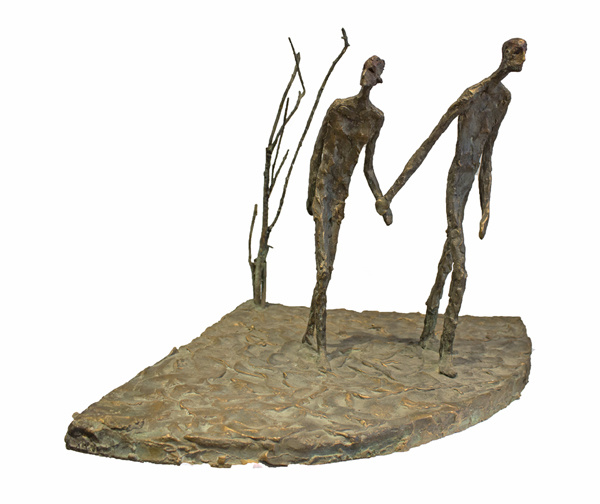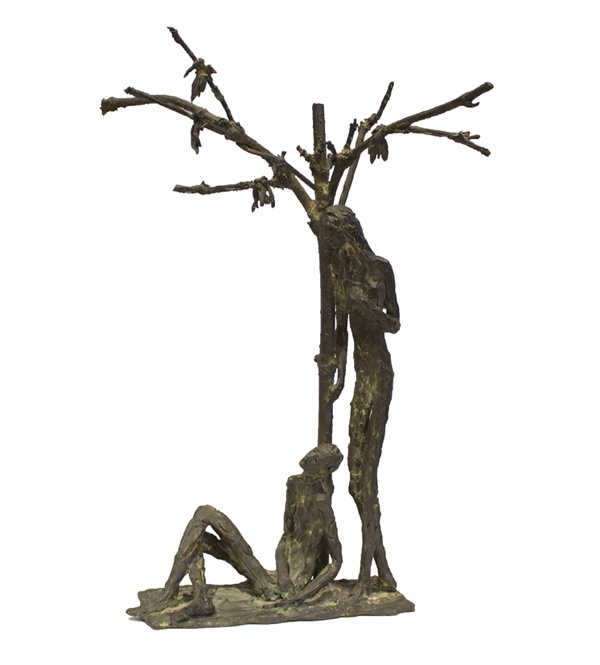Sylvia Lefkovitz
Sylvia Lefkovitz (1924-1987) – Artist Biography
Sylvia Lefkovitz saw herself as a perennial student but while the world was her school, she always came home to Montreal. Born in 1924 to working class immigrants, Lefkovitz supported herself through much of her schooling and travels with nightshift factory work and bookkeeping jobs. And she began her odyssey in the late 40’s, when the concept of a woman leaving the safety of Canada to live “abroad” was close to shocking. But leave she did — to art studies at Columbia in New York, then further schooling at both the Louvre and the Académie Julian in Paris. A year later, she moved on to absorb the work of the masters in Spain and Italy.
1954 found her in Mexico, studying the techniques and social concerns of the great muralists. They inspired her to apply these skills to some of the darker chapters of Canadian history. Once back in Montreal, she used her new proficiency with the Pyroxylin lacquer technique to create murals depicting the life of Louis Riel and the Expulsion of the Acadians. The work won Lefkovitz her first major professional recognition.
By 1960, she had saved enough money to leave again. She returned to Italy, and shifted her focus to sculpture. In the marble studios of Florence, she took an apprenticeship in carving — and became one of the few female sculptors able to wield the requisite ten-pound mallet. In the city’s ceramic factories, she learned the art of terra cotta. And working with the storied Florentine foundries, she mastered the ancient technique of lost-wax casting — and astonished the city’s art circles. In 1962, she was awarded Florence’s Porcellino Award as the best resident foreign artist. “I lived a stone’s throw away from Renaissance masterpieces,” she said. “Those boys were a threat. They forced me to give my absolute best.” She returned home later that year, now fluent in Italian and accompanied by nine crates of her painting and sculpture. The Waddington Galleries in Montreal mounted a solo exhibit of her artwork. And she used this brief homecoming to begin sculpting with Canadian wood.
1963 was another year of travel work, and study — in Greece for a time, and then Rome. She finally settled in Milan, where she had her first major Italian solo exhibit at the Galleria Montenapoleone. The show won critical acclaim, and she was lauded for her interpretation of the Italian Renaissance tradition in both her painting and sculpture. Her decision to reside in the then hard-edged northern city was a complex one. In order to create, she told the Montreal Star in 1967, she needed to live in the present. “Florence was marvellous as an influence and a reference, but Milan is contemporary.” She’d also discovered that the city was home to some of the best foundries in the world.
So it was here that Lefkovitz would spend the better part of seventeen years, living and working on a student visa. She found her major themes in mythology and the Bible, but interwove them with contemporary life. This almost two-decade period saw a succession of exhibitions, retrospectives, and awards. She won significant public and private commissions in both Europe and Canada, and the resulting work is some of her most important.
It includes the massive five-figure bronze Chorus, commissioned for the Mies Van der Rohe complex in Montreal’s Westmount Square, her Fathers of Confederation, commemorating the 1967 Canadian Centennial, and her eighty-figure Divine Comedy, purchased by the Canadian government and exhibited in the Dante Room of the Royal Palace in Milan on the occasion of Dante’s 700th birthday. The site-specific Chorus — cast at the renowned Valcamonica e Visigalli Foundry in Milan and intended for a life in Canada — was almost an inversion of her own experience. And she was acutely attuned to the sculpture’s interface with its future home; the bronze, she said, “needs to breathe. It needs differences in temperature… and wind and rain and snow.”
Lefkovitz returned for good to that home in 1981, where she worked and taught from both her Montreal studio and at the Saidye Bronfman Centre School of Fine Arts till her death in 1987. She was 62 years old.
The threads that connected Sylvia Lefkovitz’ work to the past connect it to our present some thirty years later. Her paintings of nomads look like images from yesterday’s news feeds. The isolation of her bronze figures resonates now more than ever. The perennial student had learned enough to leave behind work that still teaches us about the human condition — her all-consuming preoccupation. “What I’m trying to say concerns human dignity,” she remarked in 1967. Human beings, she warned then, “are still vulnerable and defenseless.”
Artist Specialization: Most contemporary sculptors opt to create a plaster-of-Paris model to cast their bronzes; that approach requires the intervention of a skilled artisan to duplicate the plaster model in wax. But Lefkovitz wanted no one between her and the fire. She was fierce about her need for a direct connection with her medium. “I can’t understand how anyone could hand over responsibility for the finished piece to someone else,” she said. She was intent on making her work “a product of the hands,” and perfected the “gouged out” texture that would become her trademark.
